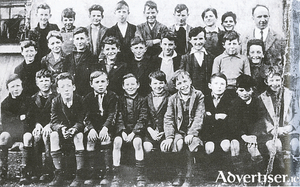Search Results for 'Irish Folklore Commission'
12 results found.
Clothes worn in tradition and art to be subject of Westport lecture next week
'Red petticoats, hooded cloaks and trusties. The clothes we wore in tradition and art.' will be the subject of a Westport Civic Trust lecture by Dr Anne O'Dowd in the Plaza Hotel, on Tuesday next March 28.
Major audit of oral heritage recordings in County Westmeath underway
Over many decades in Westmeath, precious memories of times gone by have been recorded by groups and individuals in an effort to document what are often fading memories of our past.
Groundbreaking new book on Irish trad to be launched

A GROUNDBREAKING new book on Irish traditional music, particularly the music of the Aran Islands, will be launched next week.
Tragedy at Annaghdown prompts a strange fairy visit
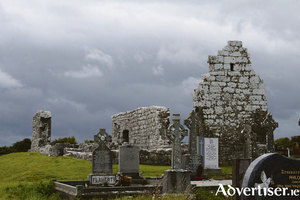
‘My father had a sister Bríd. She was a beautiful woman when she was young. She was friendly with Jack (Seán) ‘ac Coscair, but her father never knew they had spoken a word to each other. It was Bríd who used to rake the fire and close the door each night. She raked the fire and closed the door that night, and she went to bed. She was only a short time asleep when a sinneán (strong gust of wind) came, and the door was blown in against that wall below. ‘Get up, Bríd,’ said her father, ‘and close the door!’
‘There is a gentle and subtle power to her voice’

SHE WAS called the “Queen of Irish Song” by Séamus Ennis; she was recorded by Alan Lomax and is admired by Christy Moore; and her versions of Gaelic song have been covered by Clannad and Iarla Ó Lionáird.
Chance for Galway children to win an exhibition for their school
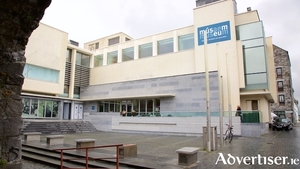
Ireland is steeped in myth, legend and folklore, and every corner of the island has its own stories of great warriors, fierce giants, troublesome fairies, enchanted animals and otherworldly phantoms.
The nailer forge
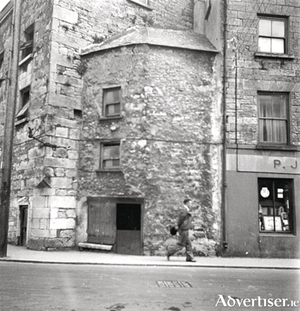
The Connaught Journal of July 1823 reported that Michael Walsh, the nailer of Bridge Street, was in great distress. He was described as being very poor, and though he worked hard, his life had been a struggle for some 12 years now because of a ‘disease of his leg’. The unfortunate man had to have the leg amputated and was now ‘reduced to extreme want’ as he was unable to work. The newspaper highlighted his predicament and hoped that the charitable and humane people of Galway would contribute to his support while he was recovering from the operation. So we know that the nailer was in business there some 200 years ago.
A Galway tradition
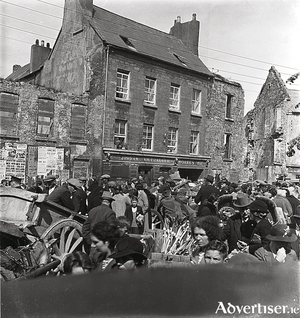
In Hely Dutton’s Survey of Galway in 1824, he reported; “The vegetable market near the Main Guard is generally well supplied, and at reasonable rates; all kinds come to the market washed, by which any imperfection is easily detected. The cabbage raised near the sea on seaweed is particularly delicious; those who have been used to those cultivated on ground highly manured cannot form any idea of the difference. There are also, in season, peaches, strawberries, gooseberries, apples, pears etc.”
The crane at Woodquay
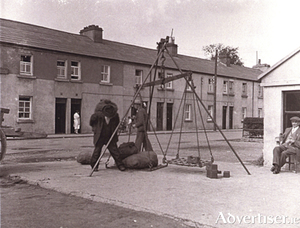
In the early 19th century, most of the area we see in our photograph would have been under water. Woodquay was so called because of the 150 feet wooden quay that ran the length of it. It was a kind of second docks for the city, attracting a lot of commercial traffic down the river. The Corrib Drainage Scheme in 1852 began to change the face of the space we are looking at, and later, when Steamer’s Quay was built, the area was gradually filled in and reclaimed.
